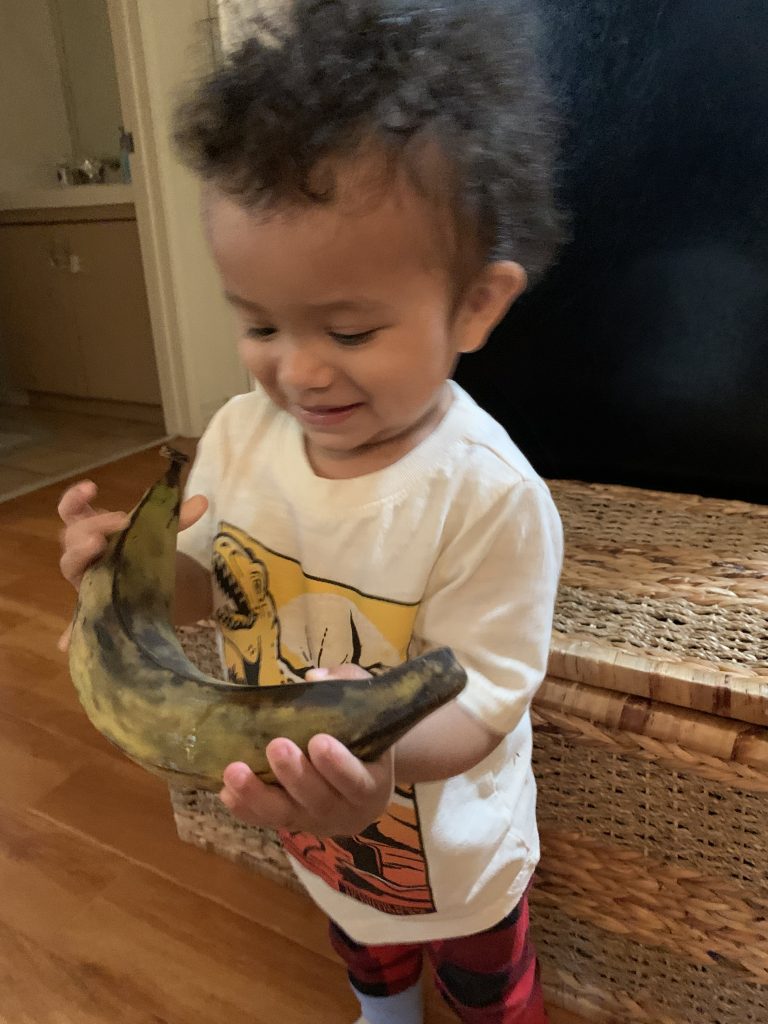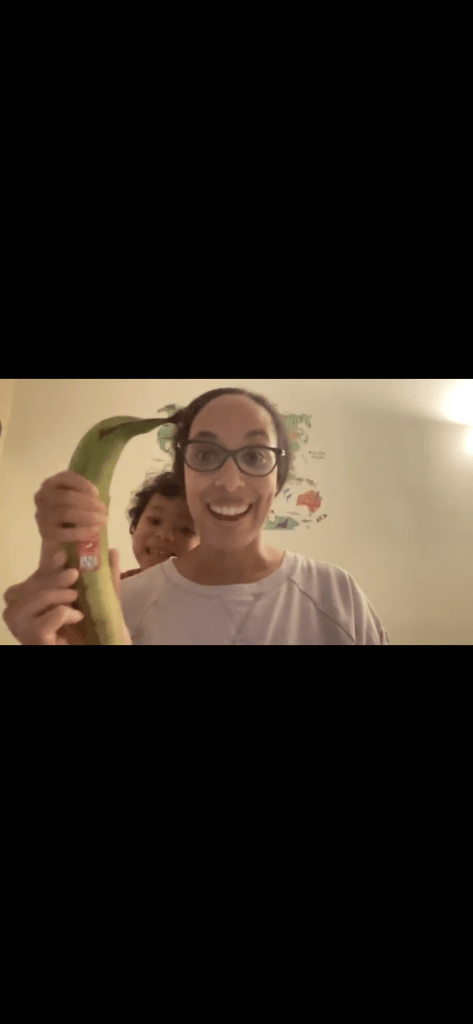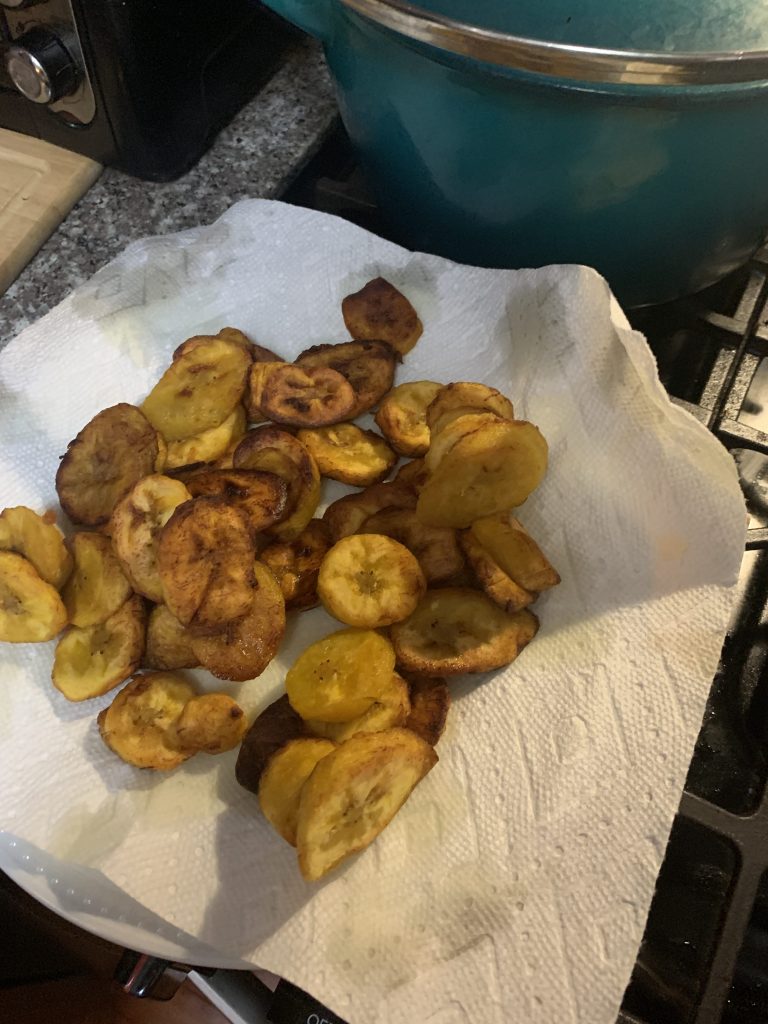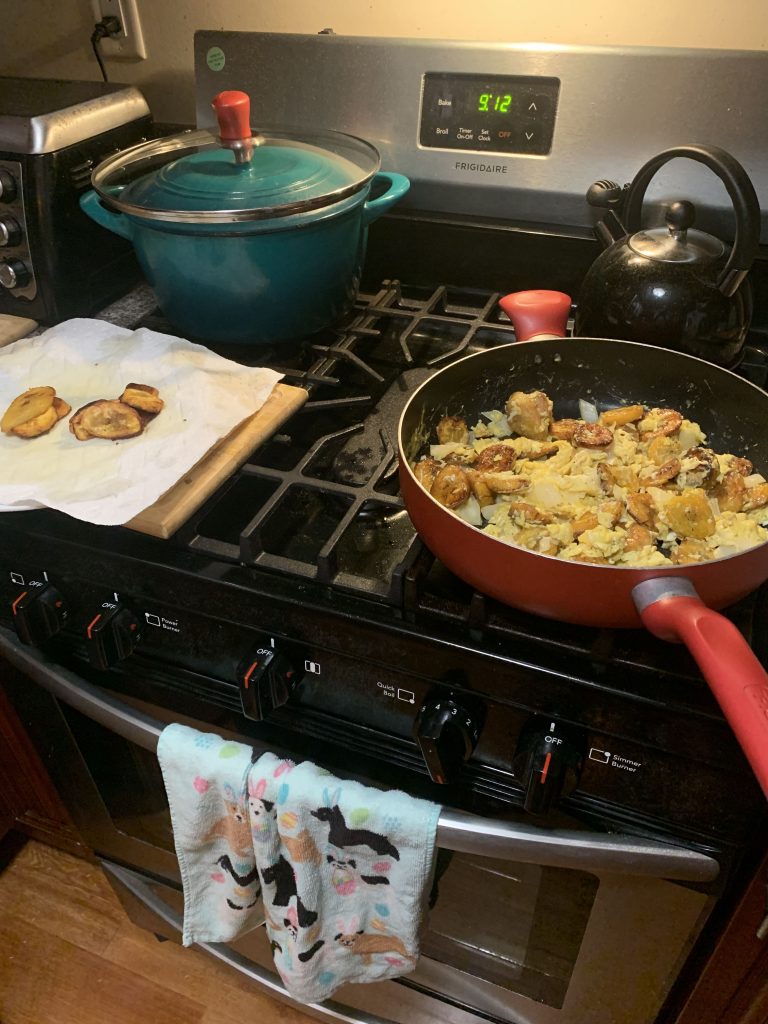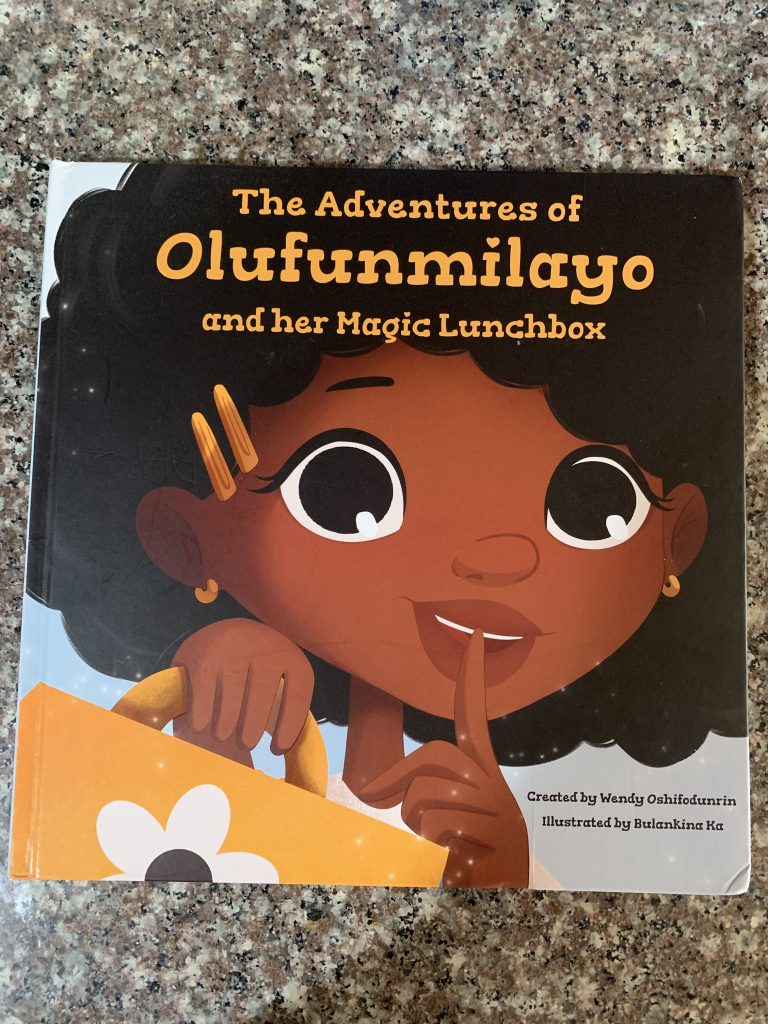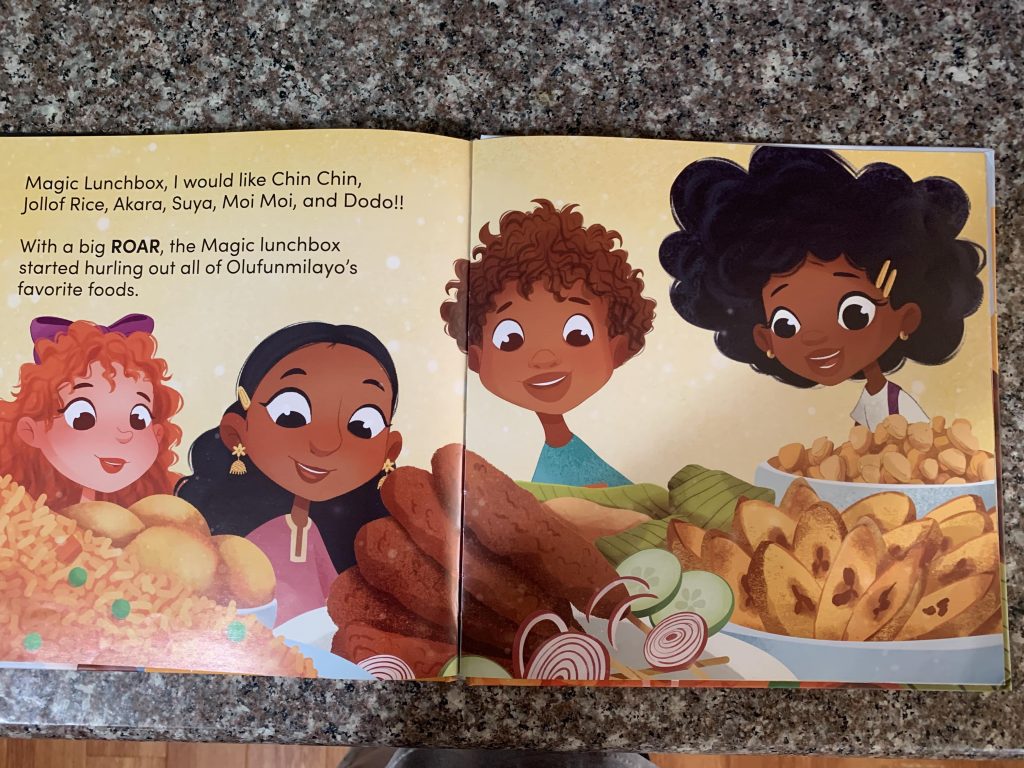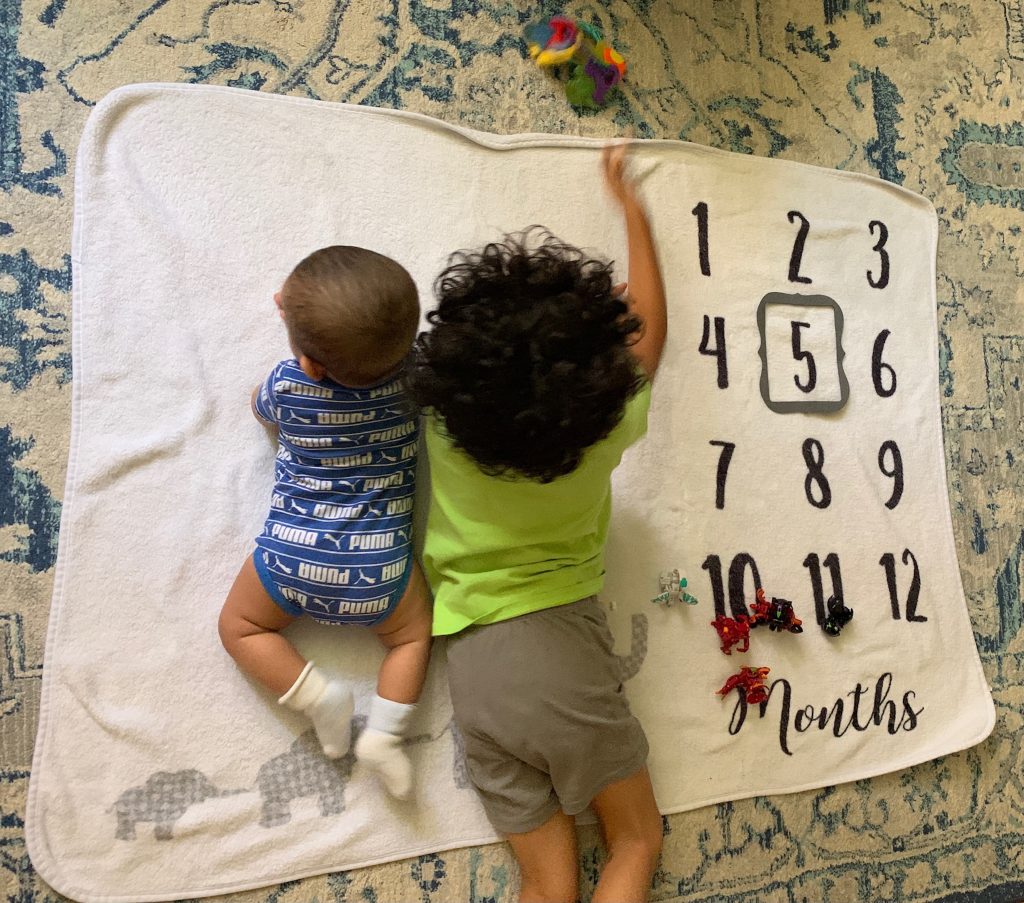When my son’s teachers asked parents to present important family traditions, I knew that ours should be about plantain.
The Black Atlantic is our newest column for nuanced, human stories about the Black experience around the world. Send your story.
Los Angeles, United States
My oldest son is the only Black boy in his class. In fact, he’s the only Black boy in kindergarten at his entire elementary school. In actuality, he’s only a quarter Black—with Caucasian-American and Nigerian lineage on my side; Vietnamese and French on his father’s. When I look at his school photo and see that his is one of only a handful of non-white faces in his class of twenty-three students, I’m concerned. As the only Black-ish parent at home, I feel responsible for teaching him about the blackness in his heritage.
‘Baca is from Nigeria,’ I remind him about his grandfather whenever our conversations at dinnertime veer towards descriptions of the ethnic and racial backgrounds of the other students in his class. We’re having these conversations more frequently these days and if it comes up during bedtime, I look at the wall in his bedroom where a world map is mounted and show him the exact spot where his grandfather’s homeland nestles between the republics of Cameroon and Benin.
‘I’m part Black?’ he often responds, to which I nod with a smile.
When he came home from school a few months ago with a note from his teachers requesting parents to present important family traditions, I knew exactly what ours should be.
‘Let’s do something about plantain,’ I whispered into his ear. His eyes lit up as though I had told him we were going to Disneyland. I’ve never felt surer than I did in that moment that he was my son.
As a child, I learned the art of patience…
…by struggling through days—that felt like years—waiting for the green plantains on the kitchen counter to be ready for my father’s epic Saturday morning dodo-making. When I was my son’s age, I didn’t care as much about watching the preparation process as I did about shoving the final product into my watering mouth. My siblings and I would usually camp out in front of the family television watching Saturday morning cartoons while the dodo-making took place in the kitchen behind us. But behind the animated chatter from the TV and the scuffles over who got to hold the remote control, I would sometimes catch an earful of the knife hitting a wooden board as my father sliced the plantains, the sizzle and pop of hot oil on the stove, and of course the long-awaited announcement that it was finally time to eat. We’d wait for everyone to get seated around the dining table, say grace, and then dig into our dodo. We’d bite into whole slices of fried plantain, mixed with eggs scrambled with ham, and onions, just the way we liked it. And as I aged, I cared less about Captain Planet and Looney Tunes in the foreground and more about the food being prepared in the background.
The roots of my plantain obsession look simple, but they run deep. My father is Nigerian. My siblings and I—all born during the 1980s—have never stepped foot on the African continent. Instead, we grew up in a small conservative pocket of California, a couple hours’ drive north of Los Angeles. Food, such as fried plantain, one of the most popular Nigerian dishes, was one of few connections we had to our father’s homeland. My siblings are not as obsessed with Nigerian foods as I am, though we all grew up eating them. Dissecting the cultural meaning behind the meals my father would throw together in the kitchen became my constant preoccupation, a deliberate effort to understand the pieces of myself I knew little about. I felt—and still feel—like eating these foods brings me closer to my father, allows me to understand him and his previous life better.
Plantain became a symbol of my uniqueness.
Living in a place where my father was the only Nigerian I knew, where I did not speak my father’s language and only on very rare occasions had any contact with members of my Nigerian family, I needed something to remind me that I was still Nigerian. And plantain did that for me. I may not have been able to speak Yoruba or visit my paternal grandparents’ house, or attend an authentic Nigerian New Year’s celebration, but I knew how to eat plantain, and then, eventually, how to fry it myself. Thus, I was Nigerian.
These days, I’m a food memoirist by trade and teach food writing workshops for a college and literary arts organization. I spend every waking moment writing about how food connects me to my ancestors, how it allows me to taste the things they tasted and cook by the methods they used. I consider it my life’s duty to help my students draw meaning from their past experiences with food, so that they, too, can connect to their ancestors.
About a year into the Covid-19 pandemic, I fried plantain at home…
…for the first time in quite a while, while my older son, who goes back and forth between wanting to be a chef and a firefighter, watched. I demonstrated how to know when the plantains are ripe (the browner the skin the sweeter the dodo); how to cut them correctly (at a diagonal angle, obviously); how to fry them properly (wait for the oil to boil, then fry for a few minutes on one side, flip the pieces, and fry a few more minutes on the other side); and how to eat them my favourite way (scrambled with eggs, with a side of steamed jasmine rice, drizzled with soy sauce). This meal has come to represent my sons’ multicultural heritage—the plantain and scrambled eggs of their Nigerian grandfather, and the jasmine rice and soy sauce borrowed from my Vietnamese husband. And that day, my curious quarter-Nigerian boy surprised me, creeping away from the TV to watch me perform magic with plantains in our cramped Los Angeles kitchen.
‘Is it ready yet?’ he asked again and again, standing on a chair to get a better view.
His impatience thrilled me, taking me back three decades ago when I counted down for the green plantains on the counter to ripen, to fry to a golden brown, to land on my tongue with their sizzling hot, glorious sweetness, fresh off the stove.
A few weeks later, I was deep into researching plantain…
…for an article I was writing for a publication, and I decided to take a break and clear my head. My husband and our five-year-old son were playing with friends at a park nearby, so I got our one-year-old son ready, which is never as quick of a process as I want it to be, so that we could join them.
Upon arriving at the park, I chit-chatted with our friends for a bit and laughed as they oohed and ahhed at the baby. Until then, our baby had spent most of his life isolated at home with me, while we updated him on his infant immunizations and waited for Covid-19 waves to cool down.
Then, I noticed that one of the fellow moms, who had walked away to get a snack for the kids, was holding a bag of chips. After catching a quick glimpse of the words on the bag, I did a double-take and made my way toward her, frantically.
‘What are those?’ I asked, squinting my eyes in an effort to get a better look.
‘Banana chips,’ she said, holding out a bag.
My older son, who had one of the snack-sized bags in his hand and was mid-bite, looked up at me.
‘No, they’re plantain chips!’ I said, pointing at the words on the bag.
‘They’re plantain chips!’ I repeated loudly, this time with a huge smile on my face, looking back and forth between the words on the bag and my son’s excited face.
It’s not as though I’d never seen a plantain chip before…
…In fact, they have become quite popular in restaurants and grocery stores in and around where I live in Los Angeles over the past few years. But I couldn’t help but laugh at my inability to escape the fruit, even when deliberately attempting to do so. They say you are what you eat, and for as long as I can remember, I’ve felt that every inch of me—from my skin to my bones to my heart to my scalp—was composed of plantain. My obsession is not only figurative but also literal: I have plantain books, plantain gear, and plantain kitchen towels.
My favorite social media account to follow is Rachel Larea (AKA ‘The Plantain Lady’), owner of Kelewele, a plantain-based food-seller that operates out of Brooklyn, New York. Larea has been traveling around her native country of Ghana and writes posts about her plantain encounters back home, adding photos of tiny plantain trees, and street sellers selling all types of plantain dishes, including her favourite, kelewele, on her page. Before this trip she also hit the road to taste-test plantain eats all around the eastern region of the United States, documenting her journey every day with videos and photos on her Instagram page. When I see her posts, I feel like I’m traveling alongside her on a worldwide plantain journey.
About a year ago, my sister gifted me a treasure called The Adventures of Olufunmilayo and her Magical Lunchbox. It is a children’s book by Wendy Oshifodunrin, about a young Nigerian girl who moves to the United States and, when she misses home, simply summons the help of her magic lunch box, and in the blink of an eye, her favourite Nigerian foods—dodo, puff puff, moi moi, chin chin, jollof rice, suya, and akara—fall from the sky. In the book’s beautiful, vibrant illustrations, the foods are oversized, nearly half the size of the children who pick them up and bite into them with huge smiles on their faces. Every time my son and I read the book, it’s as though the two of us are travelling to Nigeria, a place neither of us has ever visited, a place that is still so much a part of us, a place that I refuse to let fade from our family’s legacy.
The day before family presentations, I laid out a plan for my son…
…When he came home from school, I presented him with two plantains that were in the process of ripening.
‘These are for the family presentation,’ I said softly into his ear, as he walked through the front door. ‘It’s tomorrow,’ I continued.
I then pulled two overflowing brown grocery bags from the side of our towering bookcase, handing them to him. He opened a bag and gasped.
‘Plantain chips!’ he screamed. Inside the grocery bags were fifty snack-sized portions of plantain chips, one for each kindergartener at his school, plus a few extras for good measure. They were the same brand of chips from that day at the park. I had taken note.
‘Can I eat some now?’ he asked. I opened a bag and handed it to him.
Later that evening, we filmed our family presentation using my laptop. In it, the two of us sit on my son’s bed, each of us holding a ripening plantain. I talk about my job as a food writer and food writing professor. We share a few pages from The Adventures of Olufunmilayo that feature plantain. My son talks about how much he loves plantain and how excited he is to share plantain chips with his friends at school, that he has a bag for each one of them. And I point at the world map behind me on the wall. ‘This is Nigeria,’ I say. ‘That’s where Joey’s grandpa is from!’
I didn’t get to see the kids viewing our family presentation video at school, as parents aren’t allowed on campus right now due to COVID-19 safety protocols. I tried to pry my son for information immediately when he got home from school the day of our presentation, but I got very few details from my busy kindergartener, who was more interested in the Legos and robots waiting for him upstairs.
But then, a few weeks later, something happened. We were in the parking lot after school, and a little half-Asian, half-Caucasian girl ran up to give my son a hug. She turned to me.
‘I loved your presentation,’ she said with a smile. Shocked, I smiled back and thanked her.
My boys may be only a quarter Nigerian, but I won’t let them forget where they’re from…
…Each ripening plantain on the kitchen counter is an opportunity for me, their half-Nigerian mother, to share stories that have been passed down to me, stories I hope they will one day share with their own children. My future grandchildren and great-grandchildren may have even less Nigerian blood than my sons. Regardless, I will do everything in my power to make sure they know that they, too, are made of plantain⎈
The views, thoughts, and opinions published in The Republic belong solely to the author and are not necessarily the views of The Republic or its editors. We want to hear what you think about this article. Submit a letter to the editors by writing to [email protected].



